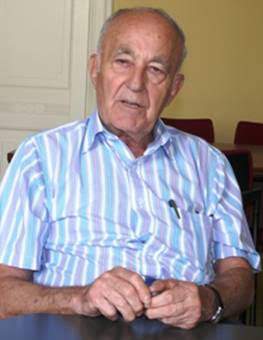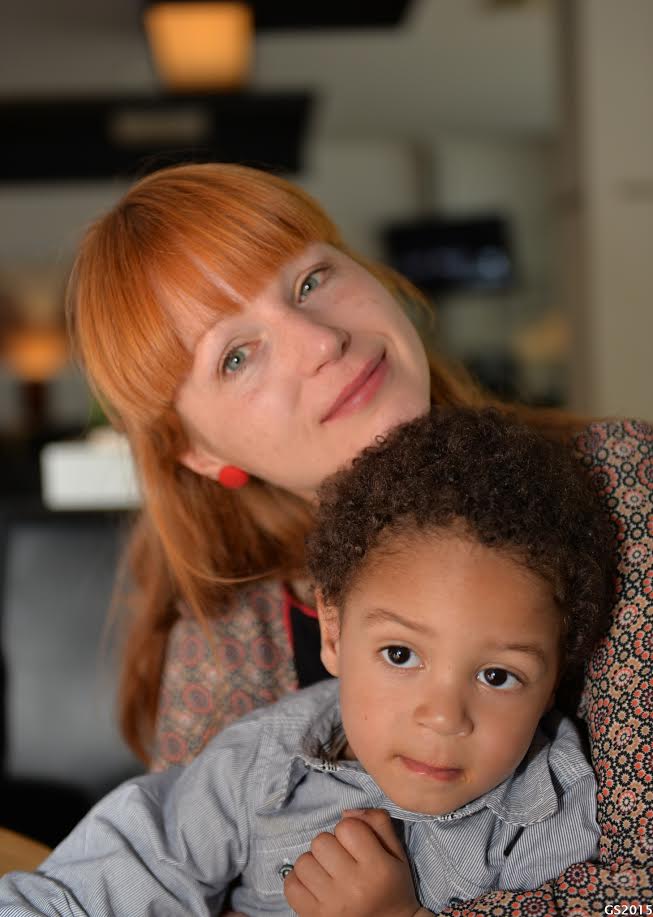
THE VOICE OF INTERNATIONAL LITHUANIA
|
VilNews has its own Google archive! Type a word in the above search box to find any article.
You can also follow us on Facebook. We have two different pages. Click to open and join.
|
Archive for 2011
- Posted by - (1) Comment
Non-Jewish witnesses to
Holocaust in Lithuania?
Washington, D.C. – The United States Holocaust Memorial Museum is looking for people to share their experiences of life in Lithuania during World War II and the Holocaust. Ina Navazelskis of the Museum’s Oral History Branch is particularly interested in speaking with non-Jewish Lithuanian witnesses to the Holocaust who now live in the U.S. or Canada.
“If you have a story to tell, or know somebody who does,” Navazelskis told VilNews, “I hope you’ll contact me. I want to hear your story and how it intersects with the Holocaust.”
Navazelskis can be reached at inavazelskis@ushmm.org.

The U.S. Holocaust Memorial Museum is seeking people to talk to about the Holocaust in Lithuania.
This advertisement was placed in the Lithuanian-language magazine Draugas, published in Chicago.
As a result of outreach efforts by the museum, people are coming forward to tell stories that have never before been told. “They say, ‘I don’t want to go to my grave without sharing what I saw,’” Navazelskis said.
Navazelskis wants to know not only what people saw, but also who they were and what their world was like. “This will help us recapture a lost part of history,” she said. Since many of the direct witnesses have died, “this is the eleventh hour.”
“Maybe you saw a hidden Jewish child,” she said, “or knew Jewish students at your school who disappeared. Maybe you know of someone who helped to rescue Jews, or can tell us what people in your town had to say about what was happening to those who were deemed to be enemies of the Third Reich.”
Navazelskis wants to hear about deportations, looting of Jewish property, public reaction to the events of the Nazi occupation. She wants to learn how events were portrayed in newspapers, newsreels, radio broadcasts, and posters.
Interviewees have been tape-recorded or filmed in Europe, Israel, and North America. They range from ordinary citizens to public figures.
Marcelijus Martinaitis recounted that he was five years old and riding in a wagon with his father when he saw Jews being driven into the forest to be shot. His father covered his eyes, but he heard the screams of the victims.
Algimantas Gureckas, a former leader of the Lithuanian World Community, an émigré organization, recalled working in a ration card office in Panevezys, where he met scores of local citizens every day. He testified about how local people reacted on the day when the Jews of the city were shot.
Ada Gens offered testimony about her Lithuanian mother and her father, Jacob Gens, who headed the Jewish community within the Vilna Ghetto. She spoke of her father’s negotiations with the Nazi command of the ghetto and of his death at the hands of the Gestapo.
The late Laimonas Noreika testified that he was working in an orchard near the Ninth Fort, the notorious killing site near Kaunas, when a soldier approached and offered him a sweater because he seemed cold. Horrified, he realized the sweater must belong to a Jew who had been murdered at the fort.
The museum’s oral history archive contains more than 12,000 audio and video interviews. The collection is open to the public and will preserve these stories for future generations
To reach Ina Navazelskis, write to her at inavazelskis@ushmm.org.

Ellen Cassedy traces her Jewish family roots to Rokiskis and Siauliai. Her book, We Are Here: Memories of the Lithuanian Holocaust, will be published in March of 2012. She lives in Washington, D.C. Visit her website at www.ellencassedy.com.
- Bookmark :
- Digg
- del.icio.us
- Stumbleupon
- Redit it
- Posted by - (0) Comment
Bloomberg
IMF Says Lithuania Needs Measures to Meet 2012 Budget Target

By Milda Seputyte
Oct. 10 (Bloomberg) -- Lithuania needs to implement spending and revenue measures equal to 1.25 percent of economic output to meet its 2012 budget-deficit target, the International Monetary Fund said.
Gross domestic product is slowing because of weaker export demand in the euro region, and “given the upside risks to the fiscal deficit, a contingency plan consisting of further measures should be prepared,” James Morsink, the IMF’s mission chief, told reporters in Vilnius today. The Washington-based lender expects Lithuania’s economy to expand 3.5 percent next year.
- Bookmark :
- Digg
- del.icio.us
- Stumbleupon
- Redit it
- Posted by - (0) Comment
Reflections from Dainų Šventė
“Funk and dance,
not folk song, is our life,
our lifestyle”

Breakdancer executing a one-handed spin to the song Jump
Around by House of Pain in Kalnu Parkas, Vilnius,
on the opening night of Dainų Šventė, 2009
Text: Emily Šaras
Associate Editor
It was a misty and moist afternoon in the summer of 2009, a year that celebrated Vilnius, Lithuania as a European Capital of Culture. Just as eager as I was sleep-deprived, I started my ethnomusicology research project that night by observing the opening Dainų Šventė event. My particular strain of jet lag – the seven-hour difference between Vilnius and Boston – was still a haunting presence, leading me to wander zombie-like throughout the streets of Senamiestis that evening. But even in my undead state, I was on a mission: like the hundreds of Lithuanians gathered in the city center, I had come to the opening night festivities of Dainų Šventė to hear my first taste of Lithuanian dainos (folk music) performed live. A hedgehog in the fog, I sought musical truth to clear out my haze.
- Bookmark :
- Digg
- del.icio.us
- Stumbleupon
- Redit it
- Posted by - (1) Comment
Reflections from Dainų Šventė
“Funk and dance, not folk song,
is our life, our lifestyle”

Breakdancer executing a one-handed spin to the song Jump
Around by House of Pain in Kalnu Parkas, Vilnius,
on the opening night of Dainų Šventė, 2009
Text: Emily Šaras
Associate Editor
It was a misty and moist afternoon in the summer of 2009, a year that celebrated Vilnius, Lithuania as a European Capital of Culture. Just as eager as I was sleep-deprived, I started my ethnomusicology research project that night by observing the opening Dainų Šventė event. My particular strain of jet lag – the seven-hour difference between Vilnius and Boston – was still a haunting presence, leading me to wander zombie-like throughout the streets of Senamiestis that evening. But even in my undead state, I was on a mission: like the hundreds of Lithuanians gathered in the city center, I had come to the opening night festivities of Dainų Šventė to hear my first taste of Lithuanian dainos (folk music) performed live. A hedgehog in the fog, I sought musical truth to clear out my haze.
By the early evening hours, dozens of benches were already full with an audience of all ages. The concept that these strangers would gather in Katedros Aikštė to unabashedly and publicly sing together astounded me. As a classical singer, I have become accustomed to performing solo on a stage, separated from my audience. Yet these patient Lithuanians sang along to a recording of “Ant Kalno Mūrai,” with lyrics projected on a large video screen like a large, nationalist karaoke party. Was this the authentic Lithuania my grandfather, a refugee during the Soviet Occupation in the late 1930s, had described in the stories he told me when I was a child? Perhaps, I thought, but with some newfangled technology involved. For a moment, I believed in the homogeneity of the spectacle.
Yet before the choirs began to sing for both the live audience and the thousands of Lithuanian viewers glued to their television sets at home, I broke away from the crowd in the event seating area to follow a curious sound that reminded me of home – a saxophone. Keeping an eye on the growing masses behind me, I walked about a hundred yards away from the crowd into Kalnų Parkas, the wooded, hilly area behind the city’s famous cathedral. There, I found the boom-box, the break dance mat, and eleven twenty-somethings jamming to what suddenly sounded so exotic against the folk backdrop: funk music.
The troupe members rotated on and off the mat, contorting their bodies into spinning shapes. They smiled, breathed excitedly and hummed along with the distorted saxophone melody line. Intrigued, I pulled the leader of the troupe aside for an interview. I was quite curious as to why they were dancing to funk under the trees instead of singing at the national festival in the square. Folk music, after all, is defined as the music of the people.
The young man took a pause, and a long drag of his joint before offering me a hit. Disappointed at my refusal (some American I am), he motioned back to growing the crowds and shook his head. Over there, he explained to me, was not the music he identified with. “Funk and dance, not folk song, is our life, our lifestyle…Funk is our music.” Such a simple but poignant statement shocked me. It was only away from all of the media publicity surrounding Capital of Culture 2009 events that I had come into contact with artists my age whose musical identities are on the blurred margins of Lithuanian musical culture. And just like that, he jumped back on the mat and threw his body into a spin.
Pluralism persisted right there in front of me, even on the night all Lithuanians were supposed to come together in unified song. All of a sudden, I understood the night’s haze in a different light: there was beauty in this newfound blur between musical genres. Towards the end of the concert, the orchestra began the finale with a pop song. “Kaip gyveni? Gerai!” (How are you? Great!) sang the audience members as two of them grabbed my hands and shook them in the air. We had never spoken to each other before, and yet all of us were dancing together, sharing in a friendly moment in which even I, the American outsider, felt included and welcomed.
That night in the fog, I threw away my search for the authentic and started to study music that crosses and blurs the borders of society. I could not clearly define the evening’s particular mix of music, but it was clear that the heterogeneity and the haziness were the definitive parts of us all coming together. People from all over the world are connected to the small city of Vilnius, and diversity and pluralism at the core of this country’s ancient history. My experiences that foggy night are reflections of that truth. Music has the power to connect our voices and bring us into musical and emotional harmony with one another. Perhaps this spirit of connection offers us a viewpoint that looks beyond our “norms” to see the value of the music, art, and culture within margins of our community.
- Bookmark :
- Digg
- del.icio.us
- Stumbleupon
- Redit it
![]()

The mayor of Lithuania's capital city, Vilnius, has come up with the suggestion of buying a Greek island as a colony that would serve as a tourist resort.
There is no doubt that the Greek economy could do with the boost a cash injection would bring and the mayor of Vilnius in Lithuania has a suggestion that would add to the coffers. Arturas Zuokas, mayor of Lithuania’s capital city, posed the wonderful idea of purchasing a Greek island for the Baltic country to use as an extra tourist resort. Instead of Lithuanians spending their vacation on foreign shores and their Lithuanian litas elsewhere, they could holiday in a Lithuanian colony sitting on a Greek island.
Read more:
http://www.digitaljournal.com/article/312515#ixzz1aHcHlrxh
- Bookmark :
- Digg
- del.icio.us
- Stumbleupon
- Redit it
![]()

An officer of the Belarusian Embassy in Lithuania explained to policemen that he had got extremely tired at work and fell asleep behind the wheel.
On October 6 at about 9.15 p.m. in Vilnius at the crossing of Naugarduko and Algirdo Streets a counsellor of the Belarus Embassy Yaraslau Diktiyeuski in a car VW Jetta with green diplomatic number plates crashed into a standing Renault minibus, which banged into a BMW car, DELFI reports.
The Belarusian diplomat driving VW Jetta has not been injured, and there were no people in the other cars. As said by the policemen, the diplomat was dead drunk, but he resfued to be tested by an alcohol-screening device. He explained to the policemen that he had become extremely tired at work and fell asleep behind the wheel.
Read more:
http://www.charter97.org/en/news/2011/10/7/43375/
- Bookmark :
- Digg
- del.icio.us
- Stumbleupon
- Redit it
- Posted by - (0) Comment
Loved the paper
Hello,
I have just returned from a trip to Vilnius. Being of Lithuanian ancestry it is a trip I have wanted to take for over 50 years, but one I never thought I would make. I went with my husband, my brother and his wife. It was a wonderful trip, and I was greatly surprised by the beauty of Vilnius. I am only sad we did not allow enough time to see other parts of the country.
In looking for information on Lithuania I came across VilNews. I was wondering if it is possible to have it sent directly to my e-mail - or if I have to tune in to read it.
Thank You,
Mary Ann Albee
+++++
Dear Mary Ann,
We are no longer sending VilNews as a newsletter to email receivers. Please visit our website as often as you can, at www.VilNews.com
It’s all for free!
The Editor
- Bookmark :
- Digg
- del.icio.us
- Stumbleupon
- Redit it
- Posted by - (0) Comment
Lithuania’s friends
and brothers

Soviet propaganda poster during the winter
war with Finland, 1939-1940.
From Wikipedia.org.
“Do you know how we Fins look upon the Russians as brothers or friends?” A Finnish friend of mine asked, and soon he revealed the answer: “We consider them our brothers, of course, because friends you can choose yourself.”
Lithuania of today is facing the problem Finland has had to deal with for many decades, and is now learning the art of keeping close ties to the West without irritating Russia too much. But Lithuania has got many more “friendship dimensions” to tackle; to keep up the mood towards the EU and to balance its relations between America and Western Europe.
Many would even say that it is questionable who are the real friends of Lithuania within Lithuania itself, or as a columnist recently wrote on this issue: “All these scandals and infights among politicians are no more than battles of personal interests which have very little if anything to do with interests of the nation.”
But first back to Russia, where a recent poll gives quite interesting information on how ordinary Russians view the relations with other countries. According to the poll, Russia's best friends are Belarus (47 percent), Kazakhstan (33 percent), China (24 percent), Germany (22 percent) and India (15 percent).
Russia's main foes are Latvia (46 percent), Georgia (44 percent), Lithuania (42 percent), the United States (37 percent), Estonia (28 per cent) and Ukraine (27 percent).
Lithuania is, in other words, considered one of Russia‘s top foes.
- Bookmark :
- Digg
- del.icio.us
- Stumbleupon
- Redit it
- Posted by - (2) Comment
Lithuania’s friends and brothers

Soviet propaganda poster during the winter
war with Finland, 1939-1940.
From Wikipedia.org.
“Do you know how we Fins look upon the Russians as brothers or friends?” A Finnish friend of mine asked, and soon he revealed the answer: “We consider them our brothers, of course, because friends you can choose yourself.”
Lithuania of today is facing the problem Finland has had to deal with for many decades, and is now learning the art of keeping close ties to the West without irritating Russia too much. But Lithuania has got many more “friendship dimensions” to tackle; to keep up the mood towards the EU and to balance its relations between America and Western Europe.
Many would even say that it is questionable who are the real friends of Lithuania within Lithuania itself, or as a columnist recently wrote on this issue: “All these scandals and infights among politicians are no more than battles of personal interests which have very little if anything to do with interests of the nation.”
But first back to Russia, where a recent poll gives quite interesting information on how ordinary Russians view the relations with other countries. According to the poll, Russia's best friends are Belarus (47 percent), Kazakhstan (33 percent), China (24 percent), Germany (22 percent) and India (15 percent).
Russia's main foes are Latvia (46 percent), Georgia (44 percent), Lithuania (42 percent), the United States (37 percent), Estonia (28 per cent) and Ukraine (27 percent).
Lithuania is, in other words, considered one of Russia‘s top foes.
As for Russo-US relations, Russia has the last 20 years been happy to have had relatively good ties with Uncle Sam. However, Putin's and Medvedev’s version of democracy is regarded by the United States as a slide towards totalitarianism.
Simultaneously, Russia is trying to improve its ‘security situations’. Around its eastern regions this is being done by establishing and strengthening a number of bilateral and multilateral partnerships, including strengthening Russo-Chinese strategic cooperative partnership, developing Russo-Indian ties and improving Russo-Japanese relations.
What Russia is doing to improve its ‘security situation’ with the Baltic States remains not always too clear, but a top Lithuanian politician told me recently that Russia now has more than 300 agents here, all trying to infiltrate and influence political changes as well as economy and other spheres, ready to ‘invest’ into areas where they see weaknesses in the Lithuanian economy, society and political life that could give Moscow some advantages by seeding discord.
We described recently how the big powers France, Germany, Poland, and Russia now seem to be moving into a better climate of cooperation among themselves. We suggested in this context that Lithuania and the other Baltic States once again could become victims of the great powers' actions, and we recommended a much closer cooperation with the Nordic countries (Scandinavia) as the best and safest solution for Lithuania, Latvia and Estonia in the future.
The Baltic countries should, in my opinion, cooperate closely on a common approach to Scandinavia, and they should do their utmost to become independent of gas, oil and electricity from Russia – as soon as possible.
Lithuania already pays 50% more for gas bought from Gazprom than what Germany pays for the same gas, and there is little doubt that Russia is doing everything possible to prevent the Baltic States from developing their own energy sources. Russia has already taken a number of worrisome, significant steps to maintain and enhance its energy monopoly here.
The Baltic States may soon be even more squeezed and caught in a trap if the Nordic countries and the EU do not do more to help in achieving a much higher degree of independence from Russian energy.
It’s good to have brothers. Friends are sometimes even better.
Aage Myhre, Editor-in-Chief
- Bookmark :
- Digg
- del.icio.us
- Stumbleupon
- Redit it

France's energy giant EDF has refused a Russian offer to build a nuclear power plant, Lithuania's Prime Minister Andrius Kubilius said after meeting his French counterpart Francois Fillon.
Kubilius said Fillon confirmed during a visit to Vilnius Friday that state-owned EDF had rejected Moscow's invitation to construct a plant in its Baltic territory of Kaliningrad, which borders Lithuania.
Kubilius told reporters that Fillon told him "very clearly" that "Russia had intensively called on EDF to take part in building the Kaliningrad nuclear power plant and EDF refused".
Vilnius has criticised the planned plant, claiming security requirements have not been met in the project.
Russia rejects the charge and says the plant, meant to be online by 2016, would be the safest in the world, reports LETA/ELTA.
Lithuania shut down its only nuclear plant – a Soviet-era facility – in 2009 under the terms of its 2004 European Union entry.
It aims to build a new one by 2020 with fellow ex-communist EU members Poland, Latvia and Estonia, and is currently in talks with Japanese-US conglomerate Hitachi GE.
Read more at:
http://www.baltic-course.com/eng/energy/?doc=46617
- Bookmark :
- Digg
- del.icio.us
- Stumbleupon
- Redit it
Lithuania restores Austrian ambassador
- Posted by - (0) Comment
![]()

Lithuanian officials claimed that 14 unarmed Lithuanians were murdered by Golovatov and his more than 1.000 KGB and army soldiers in Vilnius on the 13th of January 1991.
VILNIUS -- Lithuania's has returned its ambassador to Austria after the two countries came to an agreement on justice and international arrest warrants.
Lithuania pulled its ambassador to the country earlier this year when Austria detained but then set free Mikhail Golovatov, who is accused by Lithuania of taking part in a 1991 massacre. Lithuania has put out an international arrest warrant for Golovatov.
"I believe, that this case, so sensitive to Lithuania, has become a good lesson for Europe and boosted its solidarity. However, we should not stop fighting for a joint European attitude towards history, no matter how difficult the path may be,” said Lithuanian Foreign Minister Audronius Azubalis.
Read more at: http://www.baltictimes.com/news/articles/29691/
- Bookmark :
- Digg
- del.icio.us
- Stumbleupon
- Redit it
- Posted by - (0) Comment
First and second round of Lithuanian Litas
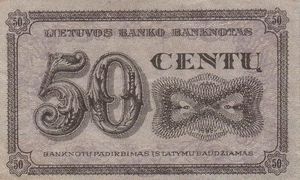
Front and back of 1922, 50 Centai banknote.
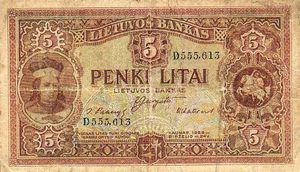
Front and back of 1929, 5 Litai banknote.
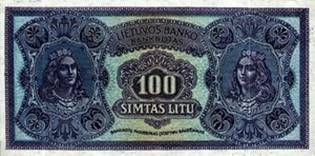
Front and back of 1922, 100 Litai banknote.
Photos courtesy of Colnect.
Auksinas
to Russian Ruble
to Ostmark and Ostruble
to Litas
to Soviet Ruble
to Litas
– the first and second introduction of the Lithuanian Litas
The official currency of the Republic of Lithuania is the Litas. Twice it has been the official currency. The first period was during the inter-war years when Lithuania regained its independence from Imperial Russia and the second period began in 1993, after Lithuania regained its independence from Soviet Russia, and is still the official currency. We would like to share with you some interesting information about what was involved in the creation of the Litas and its reintroduction.
- Bookmark :
- Digg
- del.icio.us
- Stumbleupon
- Redit it
- Posted by - (4) Comment
First and second round
of Lithuanian Litas

Front and back of 1922, 50 Centai banknote.

Front and back of 1929, 5 Litai banknote.

Front and back of 1922, 100 Litai banknote.
Photos courtesy of Colnect.
AUKSINAS to RUSSIAN RUBLE to OSTMARK and OSTRUBLE to LITAS to SOVIET RUBLE to LITAS – THE FIRST and SECOND INTRODUCTION of the LITHUANIAN LITAS
The official currency of the Republic of Lithuania is the Litas. Twice it has been the official currency. The first period was during the inter-war years when Lithuania regained its independence from Imperial Russia and the second period began in 1993, after Lithuania regained its independence from Soviet Russia, and is still the official currency. We would like to share with you some interesting information about what was involved in the creation of the Litas and its reintroduction.
FIRST LITAS, 1922-1941
HISTORY
The first litas was introduced on 2 October 1922 to replace the German Ostmark and Ostruble, both of which had been issued by the occupying German forces during World War I. Interestingly the ostmark was known as the auksinas in Lithuania as the auksinas was the currency of Lithuania in the 17th century. Before the German Ostmark and Ostruble the currency used in Lithuania was the Russian Ruble as it was occupied by Imperial Russia.


Auksinas coin Russian ruble
Ostmark was the name given to a currency denominated in Mark which was issued by Germany in 1918 for use in a part of the eastern areas under German control at that time known as the Ober Ost area. This area included Lithuania, Latvia, Estonia, Belarus, parts of Poland and Courland, which were former territories of the Russian Empire.
The currency consisted of paper money issued on 4 April 1918 by the ‘Darlehnskasse’ in Kaunas and was equal to the German Papiermark. The Ostmark circulated alongside the Russian ruble and the Ostruble, with two Ostmarks equal to one Ostruble.
Ostruble was the name given to a currency denominated in kopeck and ruble, which was issued by Germany in 1916 for use in the Ober Ost area under German occupation and the Government General of Warsaw). It was initially equal to the Russian ruble. The reason for the issue was a shortage of rubles. The banknotes were produced by the "Darlehnskasse" in Posen (now Poznan) on 17 April 1916. From 4 April 1918, the Ostruble circulated alongside the Ostmark in the Ober Ost area. It was valued at 2 Ostmarks = 1 Ostruble. In the Government General of Warsaw the Ostruble was replaced by the Polish marka on 14 April 1917.
The intitial vale of the Litas was established at a value of 10 litas = 1 US dollar and was subdivided into 100 centai. Even with the world wide economic depression, the litas was quite a strong and stable currency, reflecting the negligible influence of the depression on the Lithuanian economy. One litas was covered by 0.150462 grams of gold stored by the Bank of Lithuania in foreign countries. In March 1923, the circulation amounted to 39,412,984 litai, backed by 15,738,964 in actual gold and by 24,000,000 in high exchange securities. It was required that at least one third of the total circulation would be covered by gold and the rest by other assets. By 1938, 1 U.S. dollar was worth about 5.9 litai, falling to about 20 U.S. cents just before its disappearance in 1941 following Soviet Russia’s invasion and occupation of Lithuania.
After Lithuania was annexed by the Soviet Union the litas was replaced by the Soviet ruble with 1 litas equal to 0.9 ruble. The actual “street value” though of the litas was about 3-5 rubles. Such an exchange rate provided great profits for the military and party officials. Trying to protect the value of the currency, people started to massively buy. This combined with a downfall in production caused by Moscow’s nationalization of all private businesses and industry resulted in severe shortages of many items. Withdrawals were then limited to 250 litai before the litas was completely abolished.
COINS
Coins were introduced in 1925 in denominations of 1, 2, 5, 10, 20 and 50 centai and 1, 2 and 5 litai, with the litas coins of silver. These coins replaced the banknotes of corresponding value. 10 litų coins were introduced in 1936. All these coins were designed by the famous sculptor Juozas Zikaras (1881-1944). The litas coins displayed Jonas Basanavičius and Vytautas the Great, which was replaced by a portrait of President Antanas Smetona.


Interwar 10 litas coin, depicting Vytautas the Great Interwar 10 litas coin, depicting Antanas Smetona
BANKNOTES
In 1922, the Bank of Lithuania issued notes in denominations of 1, 2, 5, 10, 20 and 50 centai, 1, 2, 5, 10, 50 and 100 litų. In 1924, 500 and 1000 litai notes were added. Banknotes below 5 litai were replaced by coins in 1925.


Front and back of 1922, 50 Centai banknote – Photos courtesy of Colnect


Front and back of 1929, 5 Litai banknote – Photos courtesy of Colnect


Front and back of 1922, 100 Litai banknote – Photos courtesy of Colnect
1993 - THE SECOND LITAS
In the previous article, we talked about Lithuania’s transition from the Soviet Ruble to the Talonas after independence was regained in 1990. The litas once again became Lithuania's currency on June 25, 1993, when it replaced the temporary Talonas currency at a rate of 1 litas to 100 talonas. You may find it interesting that officials had started to prepare for the introduction of the litas even before independence was declared. What is even more interesting is that it was even considered to introduce the litas alongside the ruble even if Lithuania remained a part of the Soviet Union. In December 1989, artists were asked to submit sketches of possible coin and banknote designs. Also, a list of famous people was compiled in order to determine who should be featured.
The Bank of Lithuania was established on March 1, 1990. Ten days later Lithuania declared independence. At first the Lithuanian government negotiated in vain with the famous French printing house Imprimerie Oberthür to print the banknotes. In November 1990 The Bank of Lithuania decided to work with the United States Banknote Corporation (now American Banknote Corporation). In late fall of 1991 the first shipments of litas banknotes and coins arrived in Lithuania.
In November 1991, the Currency Issue Law was passed and the Litas Committee was created. It had the power to fix the date for the litas to come into circulation, the terms for the withdrawal from circulation of the ruble, the exchange rate of the litas and other conditions. Officials waited for a while for the economy to stabilize to not to expose the young litas to inflation. About 80% of Lithuania's trade was with Russia and the government needed to find a way to smooth the transition from the ruble zone. Also, Lithuania needed to gather funds to form a stabilization fund.
GATHERING FUNDS
At first, Lithuania did not have gold or any other securities to back up the litas. Lithuania needed to find about 200 million U.S. dollars to form the stabilization fund. First, it sought to recover its pre-war gold reserves (about 10 tons) from France, United Kingdom, Switzerland, etc. In the interwar period Lithuania stored its gold reserve in foreign banks. After the occupation in 1940 those reserves were “nobody’s”, there was no Lithuania and most western countries condemned the occupation as illegal and did not recognize the Soviet Union as a successor. The Bank of England, for example, sold the reserves to the Soviets in 1967. However, in January 1992 it announced that this action was a “betrayal of the people of the Baltic states” and that it would return the originally deposited amount of gold, now worth about 90 million pound sterling, to the three Baltic states. Lithuania received 18.5 million pounds or 95,000 ounces of gold and remained a customer of the bank. Similarly, in March 1992 Lithuania reclaimed gold from the Bank of France and later from the Bank of Sweden.
April 29, 1992 Lithuania joined the International Monetary Fund. In October 1992, the IMF granted the first loan of 23.05 million U.S. dollars to create the stabilization fund. However, it is estimated that at the time of the introduction of the new currency, Lithuania managed to gather only $120 million for the stabilization fund. For a brief while it was kept a secret so as not to further damage the reputation of and trust in the litas.
DELAYS INTRODUCING THE LITAS
Journalists investigating the production of the litas found that for a while it was purposely held back. For example, 6 million litas designated to pay for printing the banknotes stayed in a zero interest bearing account for a year in a bank in Sweden. By 1992, the litas was ready for introduction, but the banknotes were of extremely low quality. It was felt that one could easily counterfeit them with a simple color printer, especially the 10, 20, and 50 litai banknotes.

Early litas lacked necessary security protection
Newly elected President Algirdas Brazauskas dismissed the Chair of the Bank of Lithuania, Vilius Baldišis, for incompetence just two months before the introduction of the litas. Baldišis was later charged for negligence that cost Lithuania $3,000,000. Some even claimed that the Russian secret services were behind the affair. Baldišis’ explanation was that he was trying to cut the costs of printing the banknotes and thus did not order better security features. The “U.S. Banknote Corporation” was also accused of violation of the contract terms.
Considering all the past problems with the quality of the banknotes, you would think that with the next issue all the quality concerns would have been resolved but when the new issue of litas banknotes was redesigned, reprinted, and introduced in June 1993, it was found that the quality of the money was still too low and the banknotes would have to be redesigned further in the future. All these scandals and the small backup of gold reserve (about $120 million instead of $200 million) damaged the reputation of the litas. Thankfully, the newly appointed chair, Romualdas Visokavičius, moved things quickly and managed to win the trust of the public. Unfortunately, in October he was asked to resign mostly because of his involvement with a private bank "Litimpex."
INTRODUCTION OF THE SECOND LITAS



The 1, 2 and 5 Litai banknotes were replaced in 1998 by coins
On June 25, 1993, the litas was finally introduced at the rate of 1 litas to 100 talonas. 1 U.S. dollar was worth 4.5 litai and decreased to about 4.2 a couple of weeks later. From April 1, 1994 to February 1, 2002, the litas was officially pegged to the U.S. dollar at the rate of 4 to 1 (the litas was stable around 3.9 for half a year before the pegging). The main reasons for this fixation was little trust in the emerging monetary system, fear of high fluctuations in currency exchange rates, desire to attract foreign investors, and International Monetary Fund recommendations. The peg was renewable every year. For a while a peg was considered to a basket of currencies: the European Currency Unit. At around this time Lithuania also established a currency board.


This 4 to 1 rate remained until Lithuania became a member of the EU and then the litas was the pegged to the Euro with the official Bank of Lithuania exchange rate of 1 Euro to 3,4528 litas. Even the introduction of the litas was followed by a scandal. The government allowed the changing of unlimited amounts of talonas to the litas without having to show the source of the talonas. This allowed criminal groups to legalize their funds. Also, due to poor banknote quality (both talonas and early litas) it was easy to counterfeit them. Most shops were forced to acquire ultra violet lamps to check for forgeries. For example, it is reported that one enterprising group of counterfeiters printed 500 talonas banknotes in Turkey. It was estimated that their notes totaled 140,000 litas.


In July, circulation of the talonas was stopped and on August 1, 1993, the litas became the only legal tender. Following the reintroduction of the litas, there was an effort to weed out U.S. dollars from the market. The talonas was never really trusted by the people and the ruble was very unstable. Thus, people started using U.S. dollars as a stable currency. Another alternative was the German mark, but it was not available in larger quantities. A lot of shops printed prices in several different currencies, including dollars, and the economy was very "dollarised" as it was legal to make trades in foreign currencies.


As one final measure, from April 1, 1994, the litas was fully backed by gold and other stable securities.
THE LITAS AND THE EURO
On 2 February 2002 the litas was pegged to the euro at a rate of 3.4528 to 1. This rate is not expected to change until the litas is completely replaced by the euro. After the peg, Lithuania became a member of the Eurozone de facto. Since 28 June 2004, the litas has been part of the ERM II which is the EU's Exchange Rate Mechanism. The design of Lithuanian euro coins is already prepared.
Lithuania has postponed its euro day several times, since the country does not meet the convergence criteria. A recent analysis of SEB bankas in Lithuania says that Lithuania could not adopt the euro before 2013 due to the high rate of inflation — which reached 11% in October 2008 — well above the Maastricht criterion of 4.2%.
COINS
In 1993, coins were introduced (dated 1991) in denominations of 1, 2, 5, 10, 20 and 50 centų, 1, 2 and 5 litai. The 1, 2 and 5 centai pieces were minted in aluminium, the 10, 20 and 50 centų in bronze and the litas coins were of cupro-nickel. In 1997, nickel-brass 10, 20 and 50 centų coins were introduced, followed by cupro-nickel 1 litas and bimetallic 2 and 5 litai in 1998. All have the obverse designs showing the Coat of Arms in the center and the name of the state "Lietuva" in capital letters.

Photo courtesy of BalticValue.com
The first coins were minted in the United Kingdom. Currently, all coins are minted in the state-owned enterprise "Lithuanian Mint", which started its operations in September 1992 and helped to cut the costs of introducing the litas.
FROM LITAS TO EURO
Lithuania still waits to join the Euro Zone. While many government and business leaders are still diligently working to achieve this goal many, perhaps even the majority, of the general public is of the mind – Who needs it. While our good friends in Estonia entered the Euro Zone 1 January 2011 and everything seems to be going well for them, many in Lithuania fear that entering the Euro Zone will escalate inflation and drive prices higher. This is of great concern for the people of Lithuania given that in the past few years the prices of everything have escalated out of control with out any one in control seemingly doing anything to try to control it.
PROTECTING THE VALUE OF THE LITAS
Another concern of the Lithuanian people is how the litas would be exchanged for the Euro. I will use the exchange rates of the largest bank in Lithuania to explain this concern.
Currently if you had an account with SEB Bankas in Lithuania you could walk into one of their banking centers or log into your account via the internet and exchange litas for Euros. If the exchange is done with banknotes the buy rate would be 3.442 Litas for 1 Euro. If the exchange is done via transfer of funds from your account the buy rate would be 3.4442 Litas for 1 Euro. Given that the official Bank of Lithuania currency rate is 3.4528 Litas for 1 Euro, the difference from the buy rate to the official rate is only .0108 and .0086 centai respectfully. This difference is absolutely miniscule and nobody would complain if when the time comes that Lithuania switches to the Euro that these would be the rates of exchange. The concern many people have is that when the time comes for the exchange, since it will now be “official” that the difference between the buy rate and official rate will be increased resulting in excessive loss of value in their Litas.
So now Lithuanians wait to see if the Litas will stay in place, will the Euro take its place and if the Euro does come will the government protect their life savings by keeping the exchange rate at a very expectable level as it is now.
Su pagarbe – Vincas karnila
Associate editor
- Bookmark :
- Digg
- del.icio.us
- Stumbleupon
- Redit it
- Posted by - (0) Comment
Lithuanian music on
BBC Radio 3

At last, after many years of campaigning, the British Broadcasting Commission and its classical music channel Radio 3 has realised that classical music exists in Lietuva.
On 22 September 2011, UK based Lithuanian pianist Evelina Puzaitė appeared on BBC Radio 3s programme In Tune in a belated celebration of the 100th anniversary of the death of Čiurlionis. Despite my pleas at the time, Radio 3 ignored the actual anniversary on 10 April, but made amends with the In Tune programme which was broadcast on what would have been Čiurlionis' 135th birthday.
As well as playing six of Čiurlionis' piano pieces, Evelina gave a very professional account of his achievements in the field of music composition, art and literature. The presenter Sean Rafferty, said at the end that the BBC would pay special attention to Čiurlionis in his anniversary year.
Earlier on 16 August, the same programme featured the British Presteigne Music Festival which this year promoted Lithuanian music. As well as interviewing the Artistic Director who explained that it was the first festival of Lithuanian music to be held in Britain, a young British violinist Tamsin Waley-Cohen played Barkauskas' Partita.
Having been a thorn in the side of the BBC since 2003 in my campaigning for Lithuanian music to be played on Radio 3, I immediately emailed a letter of thanks, pointed out that the Čiurlionis anniversary had been ignored, and that Evelina Puzaitė and the Cosima Piano Quintet would be performing at an anniversary concert on 25 September at the Royal Academy of Music in London.
The outcome was an invitation for the performers to appear on In Tune. As I don't personally know Evelina and the other members of the Quintet, I passed the invite on to Daiva Parulskiene, the Cultural Attaché at the Lithuanian Embassy in London, who made the necessary arrangements.
Three days after her In Tune appearance, Evelina Puzaitė played a number of Čiurlionis' piano preludes at the very enjoyable anniversary concert in London. The string players of the Cosima Piano Quintet followed on with a performance of Čiurlionis' String Quartet, and Evelina joined the string players to end the concert with an exciting performance of Robert Schumann's Piano Quintet in C minor op 44.
My next BBC goal is a Radio 3 Composer of the Week series. I first suggested that in 2004 - even gave them a synopsis for the five programmes to be broadcast Monday to Friday (though then the plan was for Lithuanian music including Čiurlionis). Recent correspondence, including loaning the BBC my boxed set of Čiurlionis CDs bought from the Čiurlionis Museum in Kaunas, gives a glimmer of hope, and no doubt the In Tune appearances will help in the cause to get Lithuanian music performed and broadcast in Britain.
What is also needed now is for Lithuanian Radio to send the BBC a steady stream of Lithuanian music to be broadcast on Through the Night and hopefully, during the day as well. I look forward to the day when Lithuanian music is as well-known in Britain as Estonian music now is.
Tony Olsson, Ilfracombe, United Kingdom
- Bookmark :
- Digg
- del.icio.us
- Stumbleupon
- Redit it
- Posted by - (0) Comment
VilNews had 100.000 visits in 6 months!
VilNews has been online for a little over six months now. When we started, our goal was to reach 100 000 visits in ONE year. Experts thought we were kidding. The fact is that we reached the target in just six months!
Thanks to you, dear readers!
Among the things we're going to focus on this autumn and winter, is to tell you more about this nation's relations with other countries around the world. For better or worse. Open, forthright talks will still be our standards.
Please write us with your ideas and comments!
The illustrations below show some characteristics of the nations we will cover, things that make them known here, presented in Lithuania’s flag colours.
 ARTICLE NO. 1 HUNGARY |
 ARTICLE NO. 2: ITALY |
 ARTICLE NO. 3: KARAIMS |
|
 ARTICLE NO. 4: DENMARK |
 ARTICLE NO. 5: JAPAN |
 ARTICLE NO. 6: CANADA |
|
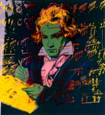 ARTICLE NO. 7: ARTICLE NO. 7:GERMANY |
 ARTICLE NO. 8: CHINA |
 ARTICLE NO. 9: INDIA |
|
 ARTICLE NO. 10: SWEDEN |
 ARTICLE NO. 11: TATARS |
 ARTICLE NO. 12: USA |
|
 ARTICLE NO. 13: RUSSIA |
 ARTICLE NO. 14: BELARUS |
 ARTICLE NO. 15: ICELAND |
|
 ARTICLE NO. 16: TURKEY |
|
 ARTICLE NO. 18: THE UK |
|
 ARTICLE NO. 19: NORWAY |
 ARTICLE NO. 20: POLAND |
 ARTICLE NO. 21: FRANCE |
|
|
|
ARTICLE NO. 22: THE LITVAKS (LITHUANIAN JEWS) |
||
Lithuania has an amazing 700-year history as an international melting pot. This has been especially evident since 1323, the year Grand Duke Gediminas founded Vilnius as Lithuania’s capital city and immediately decided to invite merchants, craftsmen, bankers, farmers, and soldiers from all Europe to come to the new capital, guaranteeing all freedom of beliefs and good working conditions. Vilnius became international, though with less of German or Scandinavian influence, as one could expect, rather influenced by Italy and Mediterranean ideas – greatly different from the other two Baltic capitals where Hanseatic influence became dominant.
VilNews will over some time this autumn publish articles about impacts of foreign nations and cultures here. We also welcome you, dear readers, to share with us information you may have about ‘foreign footprints in Lithuania’.
CLICK HERE TO READ ON WHITE BACKGROUND…
- Bookmark :
- Digg
- del.icio.us
- Stumbleupon
- Redit it
- Posted by - (2) Comment
VilNews had 100.000 visits in 6 months!
VilNews has been online for a little over six months now. When we started, our goal was to reach 100 000 visits in ONE year. Experts thought we were kidding. The fact is that we reached the target in just six months!
Thanks to you, dear readers!
Among the things we're going to focus on this autumn and winter, is to tell you more about this nation's relations with other countries around the world. For better or worse. Open, forthright talks will still be our standards.
Please write us with your ideas and comments!
The illustrations below show some characteristics of the nations we will cover, things that make them known here, presented in Lithuania’s flag colours.
 ARTICLE NO. 1 HUNGARY |
 ARTICLE NO. 2: ITALY |
 ARTICLE NO. 3: KARAIMS |
|
 ARTICLE NO. 4: DENMARK |
 ARTICLE NO. 5: JAPAN |
 ARTICLE NO. 6: CANADA |
|
 ARTICLE NO. 7: ARTICLE NO. 7:GERMANY |
 ARTICLE NO. 8: CHINA |
 ARTICLE NO. 9: INDIA |
|
 ARTICLE NO. 10: SWEDEN |
 ARTICLE NO. 11: TATARS |
 ARTICLE NO. 12: USA |
|
 ARTICLE NO. 13: RUSSIA |
 ARTICLE NO. 14: BELARUS |
 ARTICLE NO. 15: ICELAND |
|
 ARTICLE NO. 16: TURKEY |
|
 ARTICLE NO. 18: THE UK |
|
 ARTICLE NO. 19: NORWAY |
 ARTICLE NO. 20: POLAND |
 ARTICLE NO. 21: FRANCE |
|
|
|
ARTICLE NO. 22: THE LITVAKS (LITHUANIAN JEWS) |
||
Lithuania has an amazing 700-year history as an international melting pot. This has been especially evident since 1323, the year Grand Duke Gediminas founded Vilnius as Lithuania’s capital city and immediately decided to invite merchants, craftsmen, bankers, farmers, and soldiers from all Europe to come to the new capital, guaranteeing all freedom of beliefs and good working conditions. Vilnius became international, though with less of German or Scandinavian influence, as one could expect, rather influenced by Italy and Mediterranean ideas – greatly different from the other two Baltic capitals where Hanseatic influence became dominant.
VilNews will over some time this autumn publish articles about impacts of foreign nations and cultures here. We also welcome you, dear readers, to share with us information you may have about ‘foreign footprints in Lithuania’.
- Bookmark :
- Digg
- del.icio.us
- Stumbleupon
- Redit it
VilNews e-magazine is published in Vilnius, Lithuania. Editor-in-Chief: Mr. Aage Myhre. Inquires to the editors: editor@VilNews.com.
Code of Ethics: See Section 2 – about VilNews. VilNews is not responsible for content on external links/web pages.
HOW TO ADVERTISE IN VILNEWS.
All content is copyrighted © 2011. UAB ‘VilNews’.

 Click on the buttons to open and read each of VilNews' 18 sub-sections
Click on the buttons to open and read each of VilNews' 18 sub-sections 











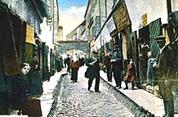
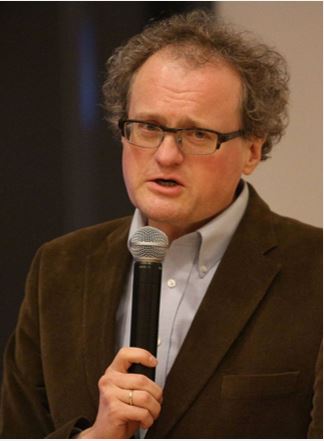
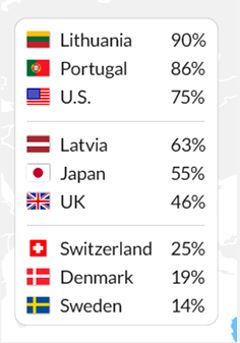
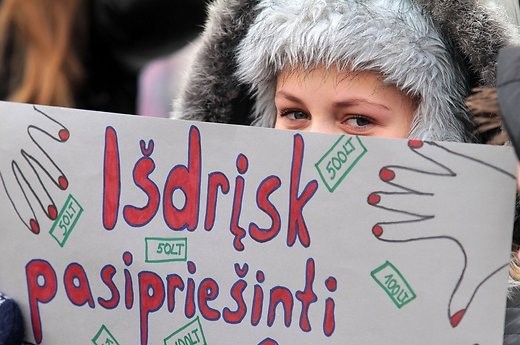


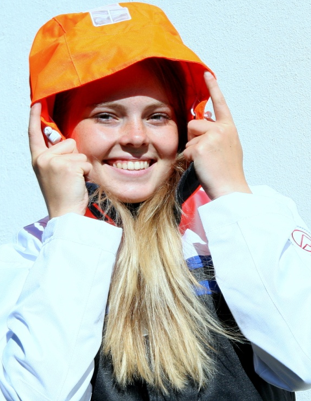
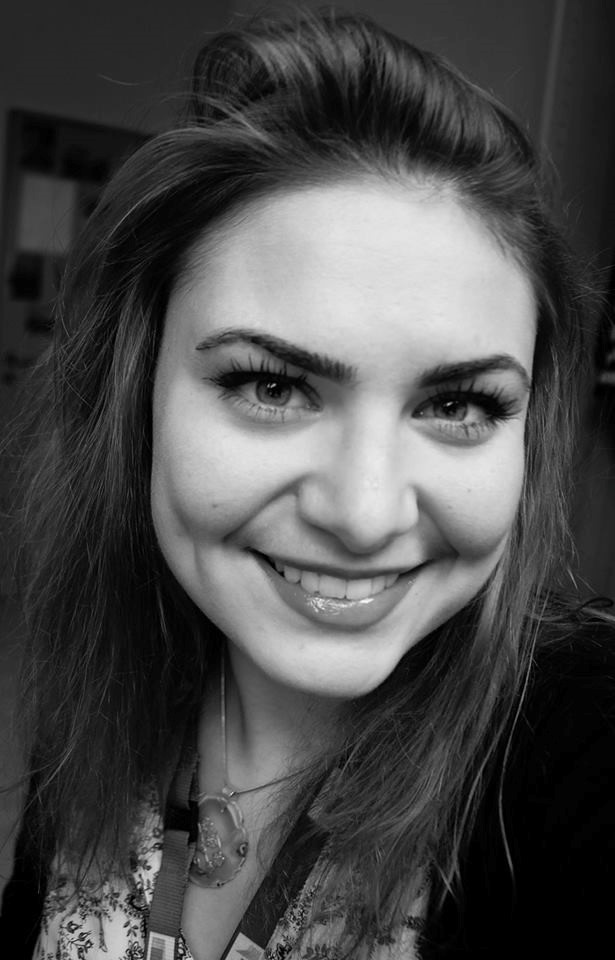
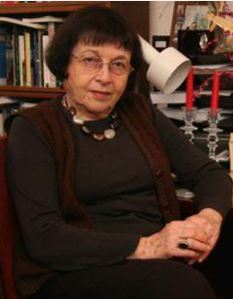
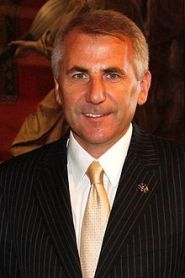
.jpg)
